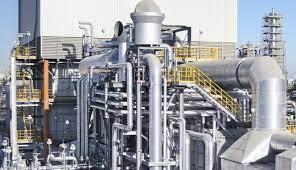A Waste Heat Recovery System (WHRS) is a technology designed to capture and reuse heat energy that is otherwise lost during industrial processes. This technology capitalizes on the thermal energy expelled from machinery, engines, and various industrial processes, converting it into useful energy forms such as electricity, heating, cooling, or mechanical power. By doing so, it enhances overall energy efficiency and reduces fuel consumption and greenhouse gas emissions. The Global WHRS market size is expected to grow from USD 72.5 billion in 2022 to USD 102.1 billion by 2027 at a compound annual growth rate (CAGR) of 7.1% during the forecast period. The waste heat recovery system market is expected to witness significant growth due to strict government regulatory requirements, increasing concerns about environmental protection, rising concern for energy prices, and the reluctant use of waste heat management technologies. Concerns about rising carbon emissions and the depletion of fossil fuels are also expected to drive the market.
Download PDF Brochure: https://www.marketsandmarkets.com/pdfdownloadNew.asp?id=202657867
Key elements of Waste Heat Recovery Systems include:
➢ Heat Exchangers: Devices that transfer heat from exhaust gases or liquids to another fluid, often water or air.
➢ Organic Rankine Cycle (ORC): A process that converts heat into mechanical energy, which can then be transformed into electricity.
➢ Heat Recovery Steam Generators (HRSG): Systems that utilize waste heat to produce steam, which can be used for power generation or industrial processes.
➢ Thermoelectric Generators (TEGs): Devices that convert heat directly into electricity using thermoelectric materials.
➢ Combined Heat and Power (CHP): Systems that generate both electricity and useful heat from the same energy source.
Browse 208 market data Tables and 38 Figures spread through 222 Pages and in-depth TOC on "Waste Heat Recovery System Market by Application (Preheating and Steam & Electricity Generation), End-Use Industry (Petroleum Refining, Metal Production, Cement, Chemicals, Pulp & Paper), and Region - Global Forecast to 2027"
Key Findings of the Study:
▶Growing environmental concerns and surging need for energy efficient systems are a key to market growth
▶ Steam & electricity generation is expected to have highest CAGR in the forecast period
▶ The Europe to be the biggest market during the projection period.
Get Sample Copy of this Report: https://www.marketsandmarkets.com/requestsampleNew.asp?id=202657867
WHRS Market Demand in End Use Industry
The demand for Waste Heat Recovery Systems is driven by several key factors across various industries:
- Energy Efficiency Regulations: Governments and regulatory bodies worldwide are imposing stricter energy efficiency standards, pushing industries to adopt WHRS to comply and reduce their carbon footprint.
- Cost Reduction: Industries are constantly seeking ways to lower operational costs. WHRS offer significant savings by reducing fuel consumption and utilizing recovered heat for other processes.
- Sustainability Goals: As businesses strive to meet sustainability targets and reduce greenhouse gas emissions, WHRS provide an effective means of improving energy efficiency and minimizing environmental impact.
- Technological Advancements: Innovations in materials and design have made WHRS more efficient and cost-effective, driving their adoption across various sectors.
- Rising Energy Costs: Increasing energy prices make the implementation of WHRS economically attractive, as they can substantially cut down energy expenses.
Waste Heat Recovery System Market Key Players
A few of the major players are ABB Ltd. (Switzerland), Wood (John Wood Group Plc) (UK), Ormat Technologies Inc. (US), General Electric Co. (US), Mitsubishi Heavy Industries Ltd. (Japan), Echogen Power Systems Inc. (US), Econotherm Ltd. (UK), Thermax Limited (India), Siemens AG (Germany), and Cool Energy Inc. (Colorado). These players have implemented various growth strategies, such as acquisitions, investments, expansions, joint ventures, and partnerships, to enhance their market shares and boost their product portfolios.
Applications of Waste Heat Recovery Systems
❖Manufacturing: Heavy industries such as steel, cement, glass, and chemicals utilize WHRS to capture and reuse heat from furnaces, kilns, and other high-temperature processes.
❖ Power Generation: Power plants, especially those using fossil fuels, implement WHRS to recover heat from flue gases and improve overall plant efficiency.
❖ Petrochemical Industry: Refineries and petrochemical plants use WHRS to capture heat from various chemical reactions and processes, enhancing energy efficiency and reducing emissions.
❖ Automotive: WHRS in internal combustion engines recover heat from exhaust gases, contributing to fuel efficiency and reduced emissions.
❖ Food and Beverage: This industry uses WHRS to capture and reuse heat from cooking, baking, and sterilization processes, leading to energy savings and improved sustainability.
❖ HVAC Systems: Buildings and commercial spaces use WHRS in their heating, ventilation, and air conditioning systems to recover heat from exhaust air, enhancing energy efficiency.
Get 10% Customization on this Report: https://www.marketsandmarkets.com/requestCustomizationNew.asp?id=202657867

